 |
 |
|||||||||||||||||||||
|
||||||||||||||||||||||
Trumpeter Swan (Cygnus buccinator), Mohave Valley, Mohave County
These Trumpeter Swans were discovered and photographed by Gary Graves on 12 January 2012
along Vanderslice Road and were also photographed by John West the same day.
There are four previous records of this species in Arizona, the most recent in
2006.
Five individuals (4 adults, 1 showing residual juvenile characteristics). Deep throaty honks unlike high-pitched calls of Tundra Swan. Long bill with rather straight dorsal profile. None of the birds had bands or clipped (missing) halluxes (which might indicate escaped aviary birds).
Adult Tundra and Trumpeter Swans are surprisingly difficult to identify.
However, these birds all show several characters supporting the Trumpeter Swan
identification. Perhaps the best way to distinguish adult swans (other
than voice) is the shape of the feathering on the forehead. These birds
show V-shaped feathering typical of adult Trumpeter Swan, rather than the
U-shaped feathering typical of adult Tundra Swan and immatures of both species.
Most adult Tundra Swans have a yellow loral spot, but 1-2% lack such a spot.
No Trumpeter Swan ever has a loral spot and all these birds lack a loral spot.
Given how rare absence of the loral spot is in Tundra, it would be very unlikely
for five such individuals to occur together. Typical Trumpeter Swans have
a straight edge down from the eye between the facial skin/ramphothecum and the
feathers, whereas in Tundra this is more curved or kinked, but there is
variation in this trait. These birds all have a salmon-colored grin streak
which is always present in Trumpeter Swan, less often in Tundra. These
birds appear very long necked compared to the shorter necked look of Tundra.
Finally, Tundra Swan usually, but not always, has a narrow strip of black loral
facial skin that makes the eye seem separate from the black bill. These
birds, like most Trumpeters, have wider facial skin that makes the eye seem
visually part of the bill.
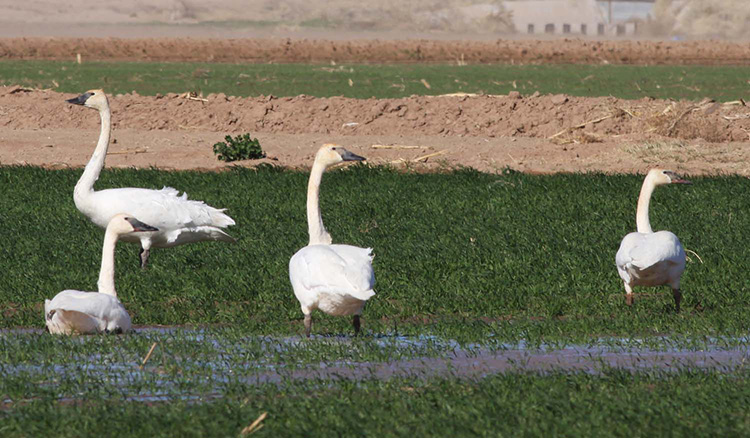
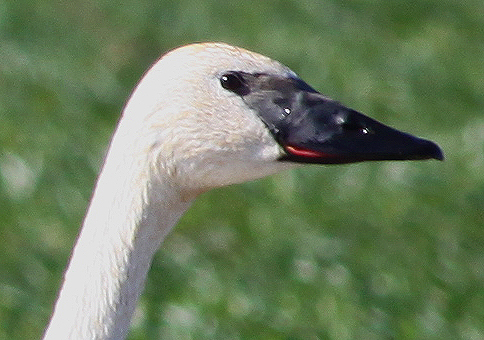
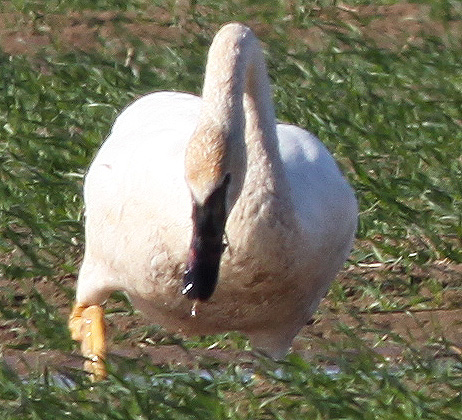
12 January 2012, photo by Gary Graves

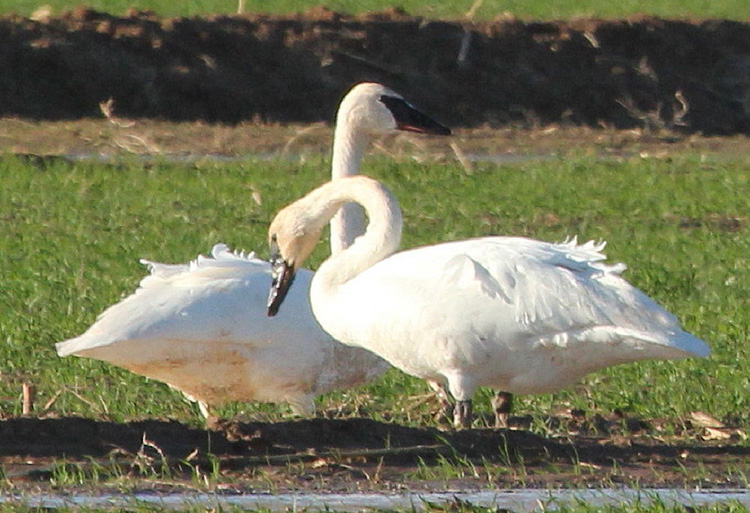
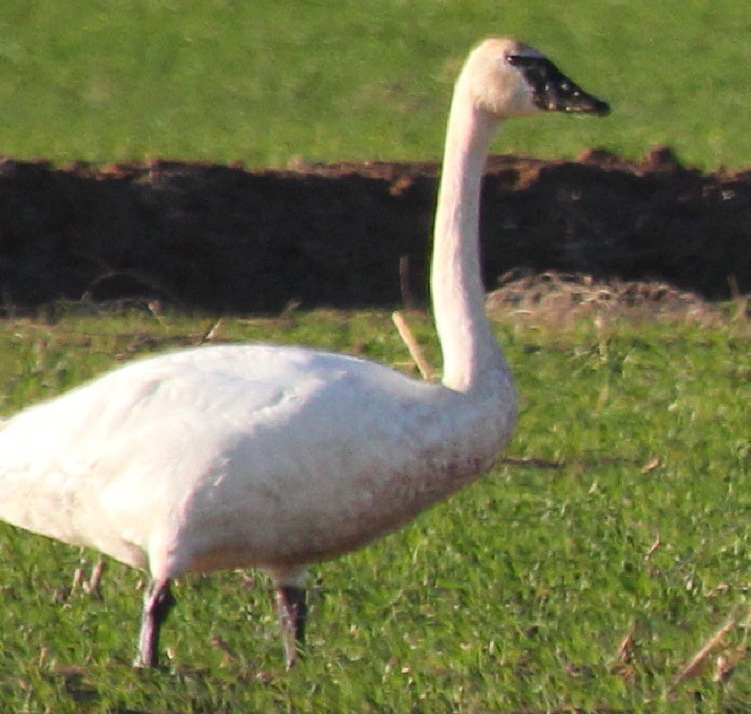
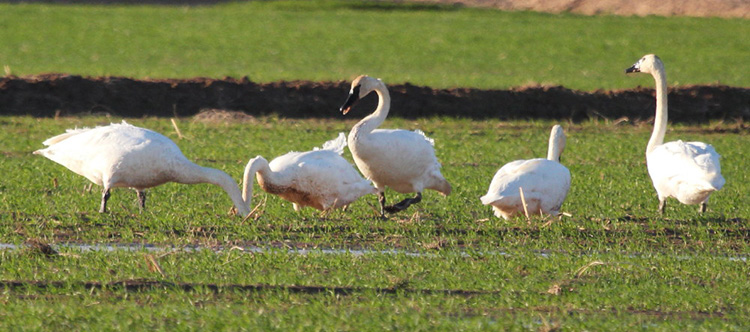
12 January 2012, photo by John West
All photos are copyrighted© by photographerSubmitted on 12 January 2012
|
©2005
|
HOME | | | REPORT SIGHTINGS | | | PHOTOS | | | BIRDING | | | JOURNAL | | | ABOUT US | | | CHECKLISTS | | | AZ BIRD COMMITTEE | | | EVENTS | | | LINKS |